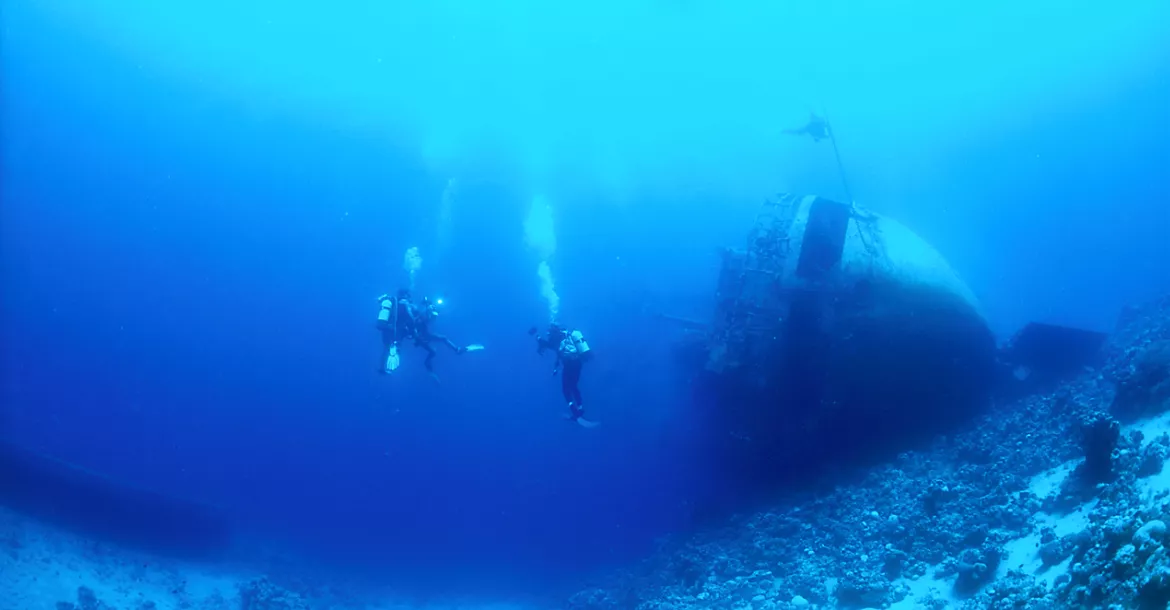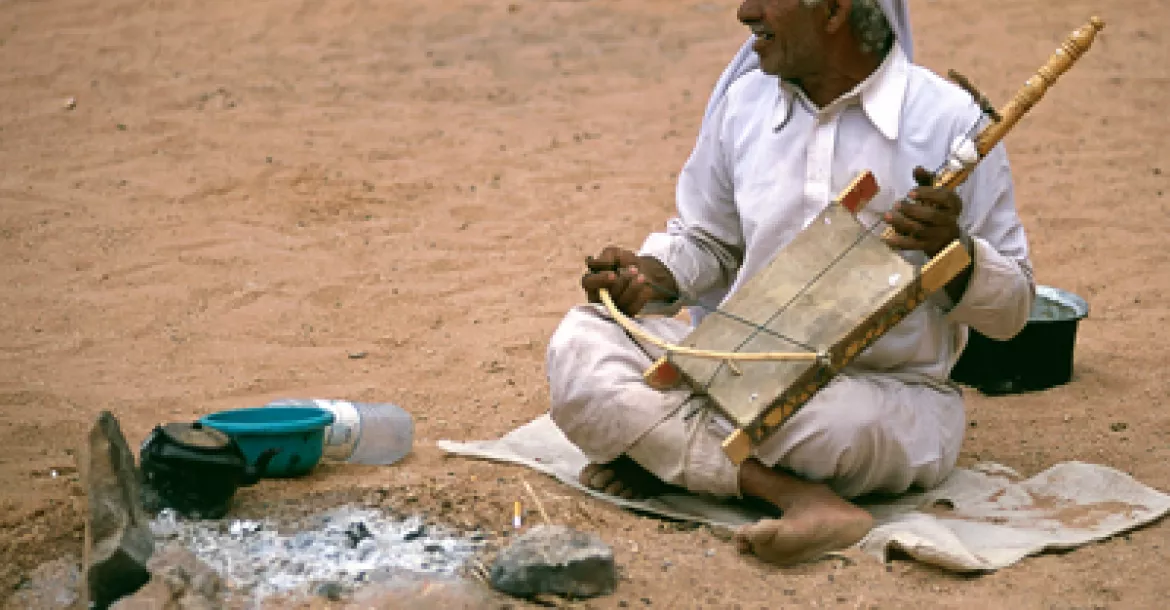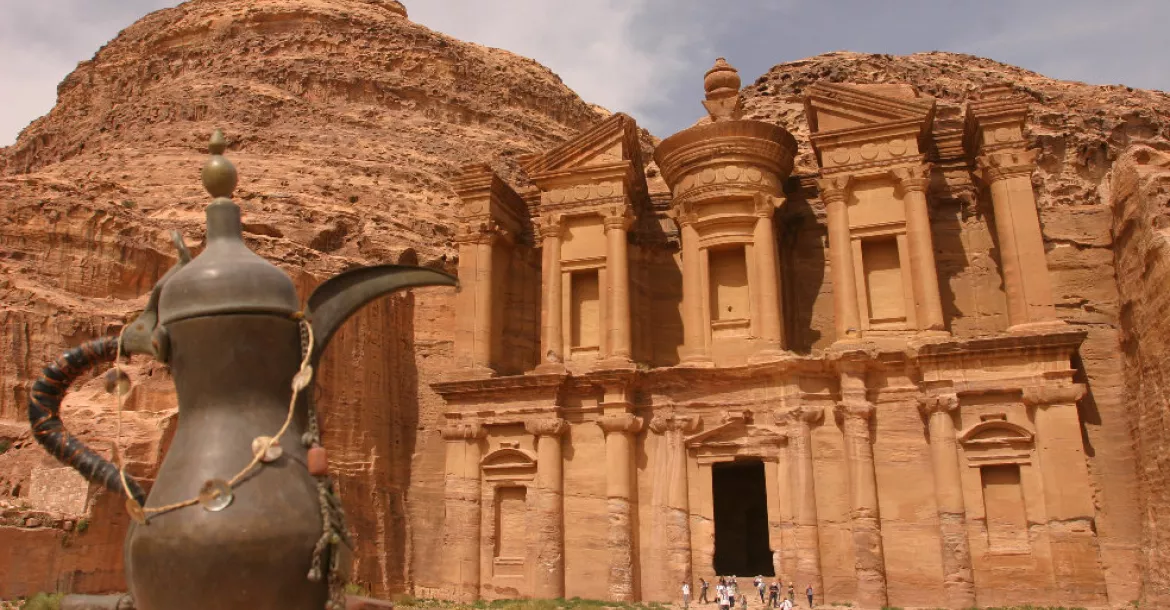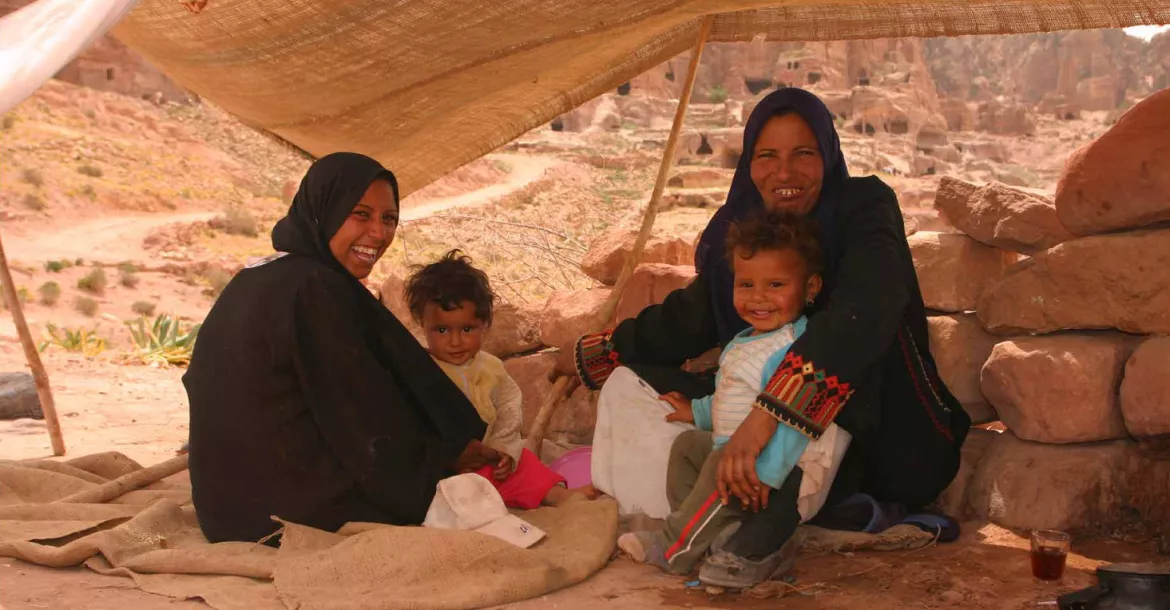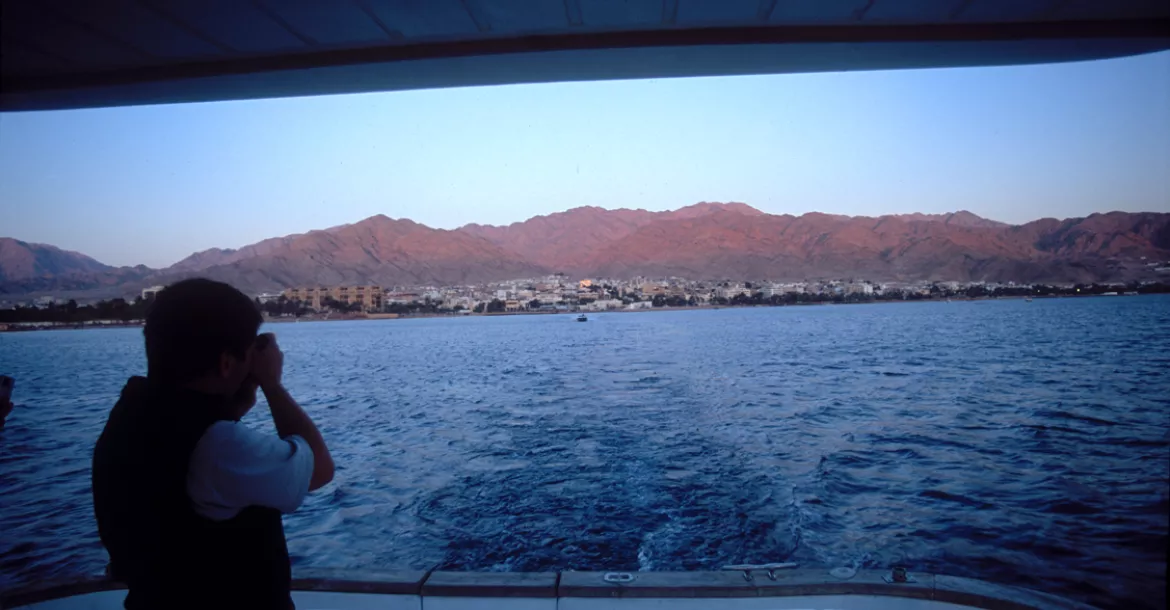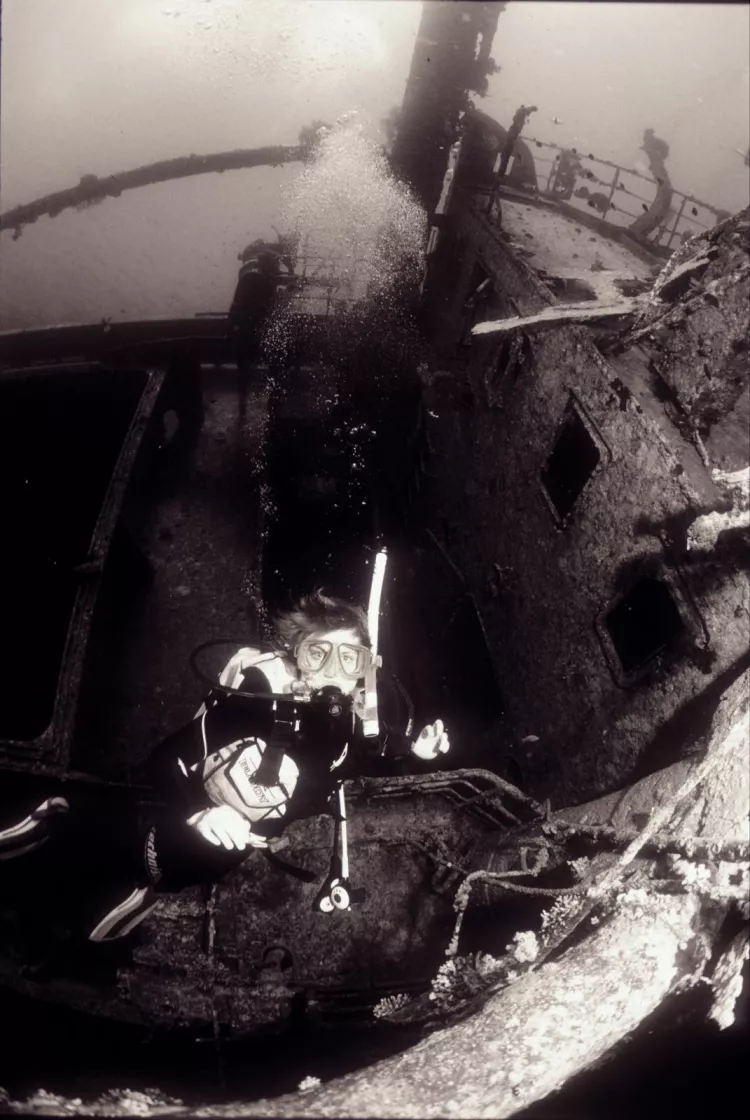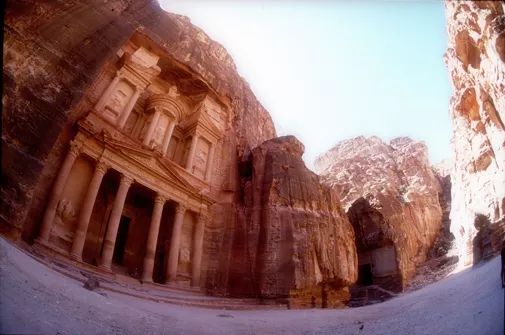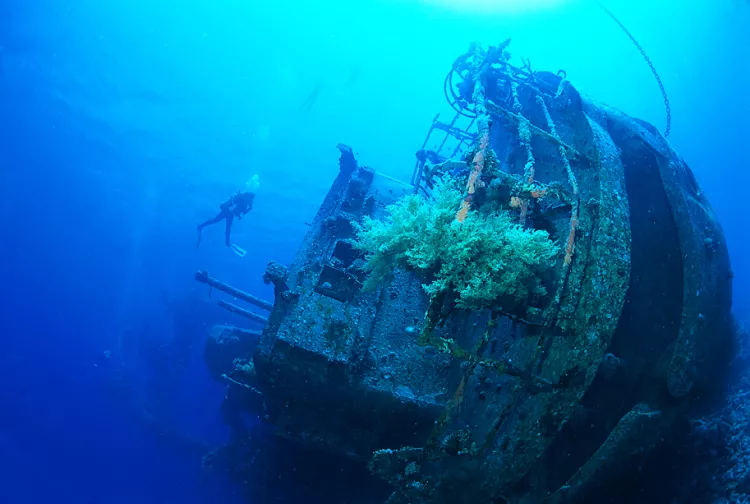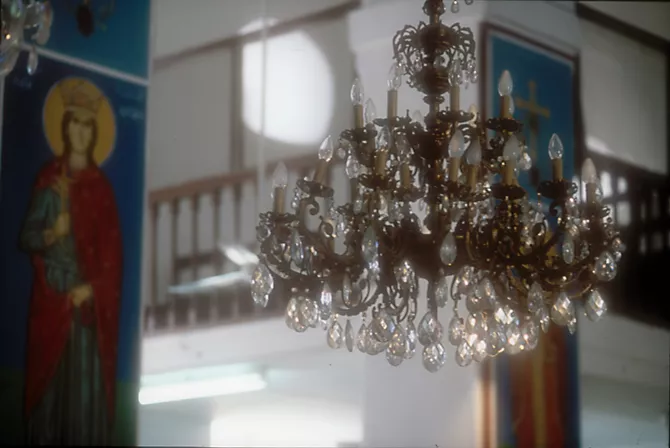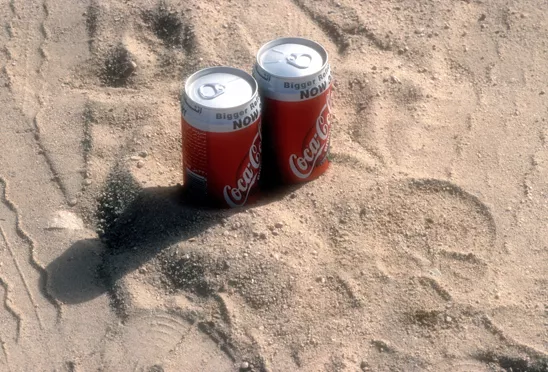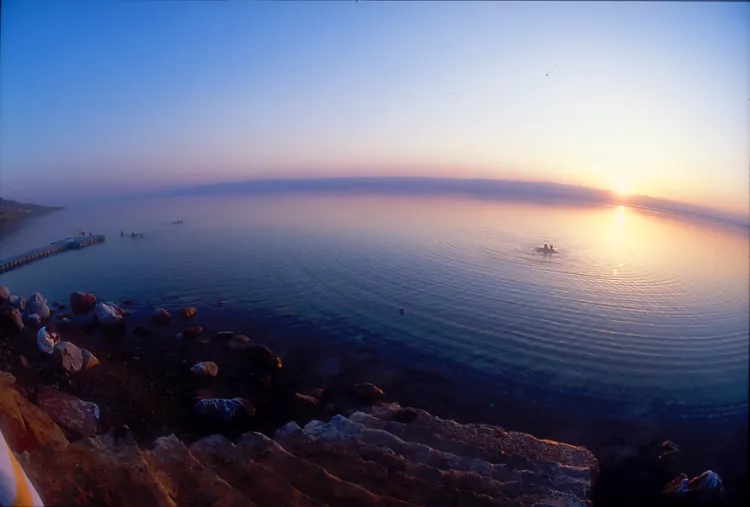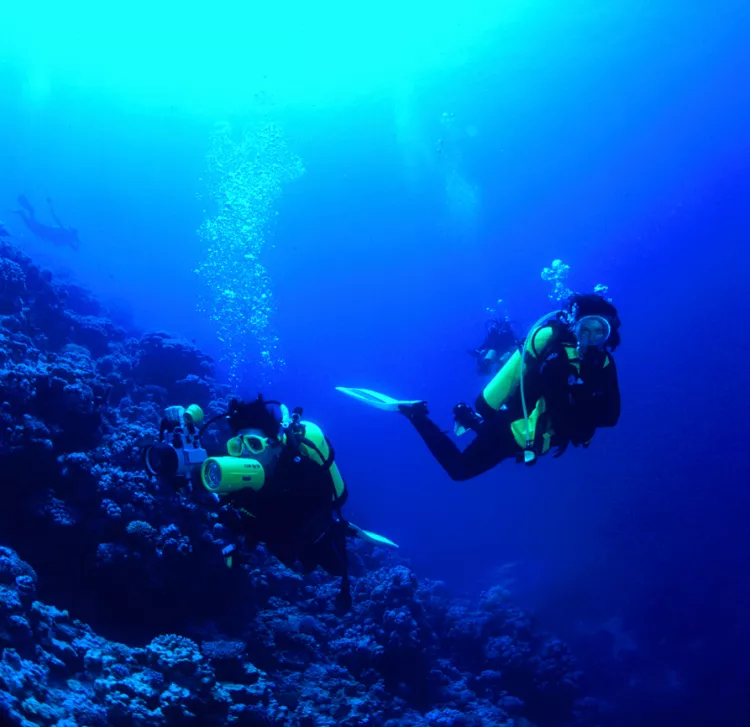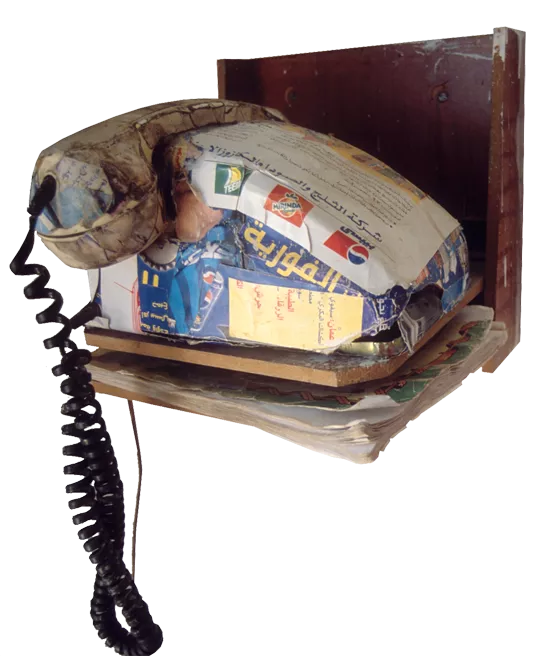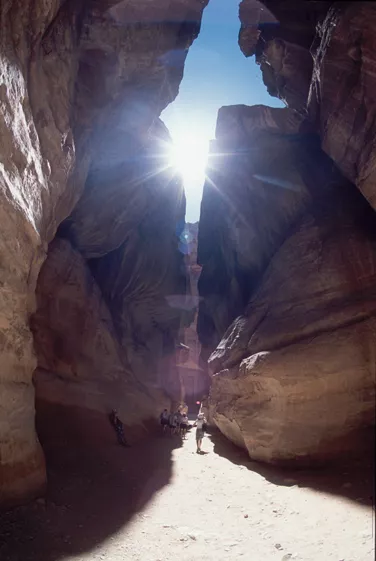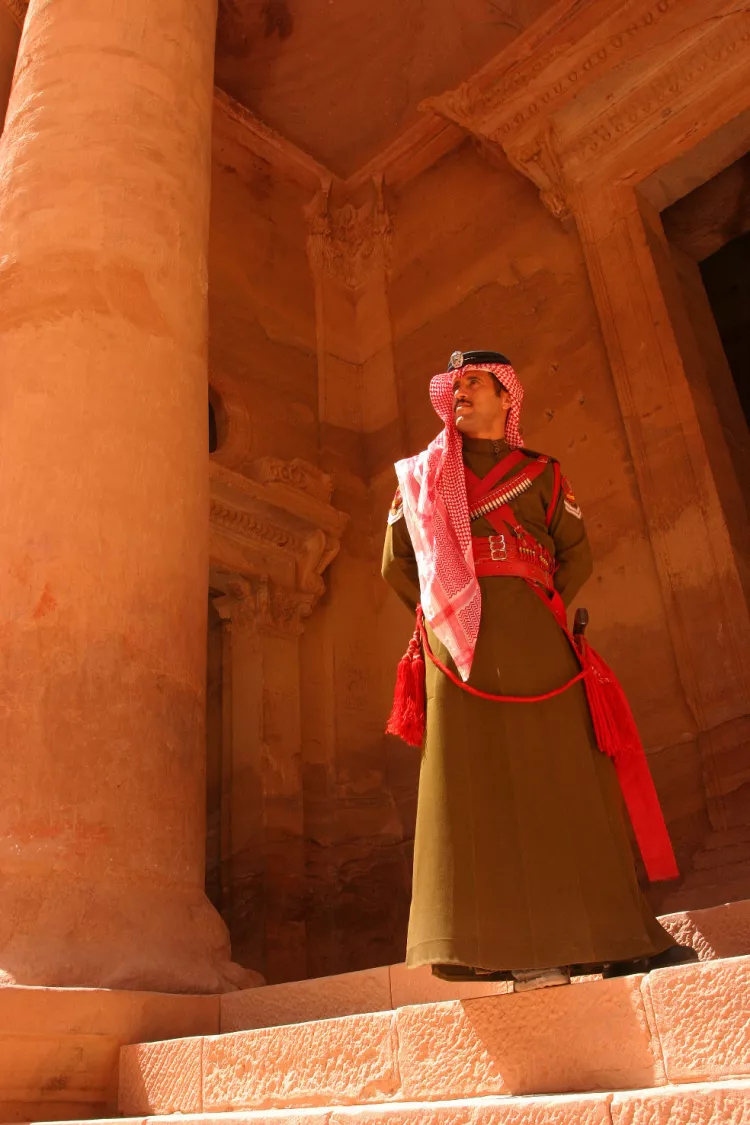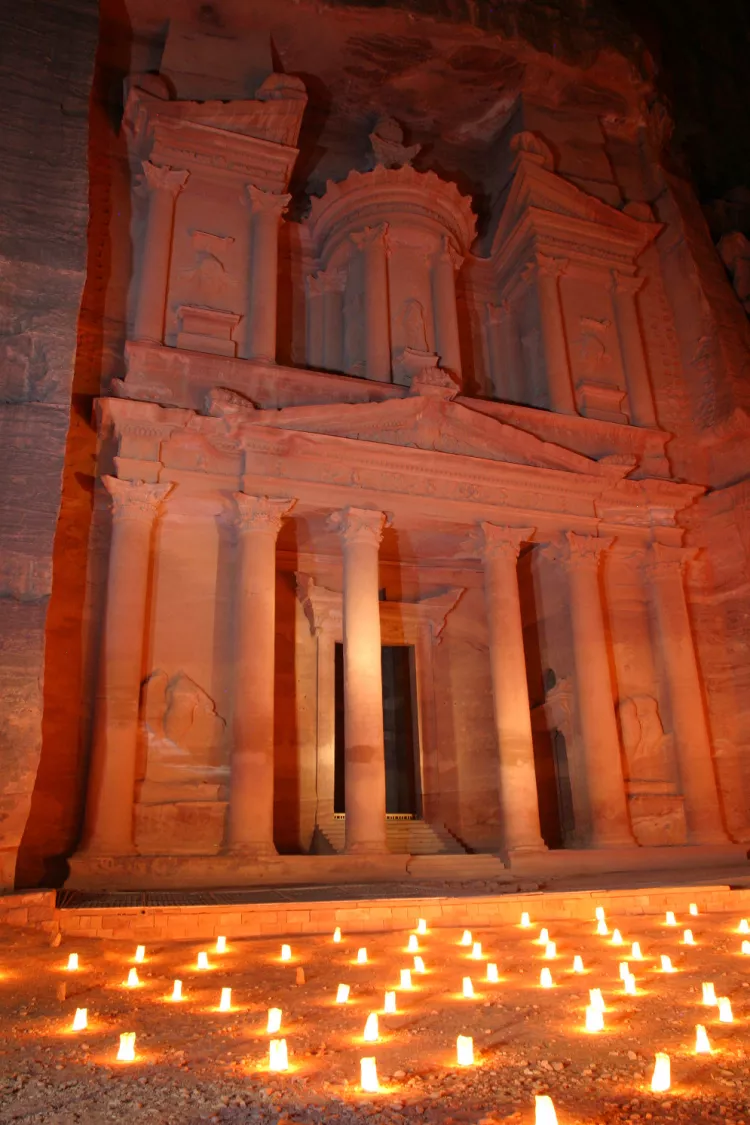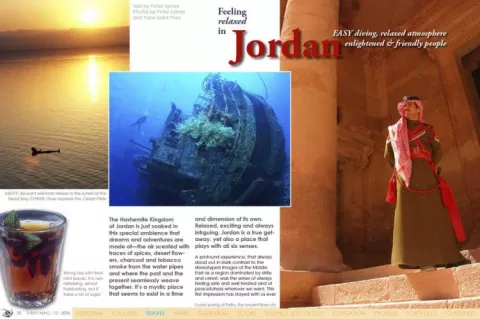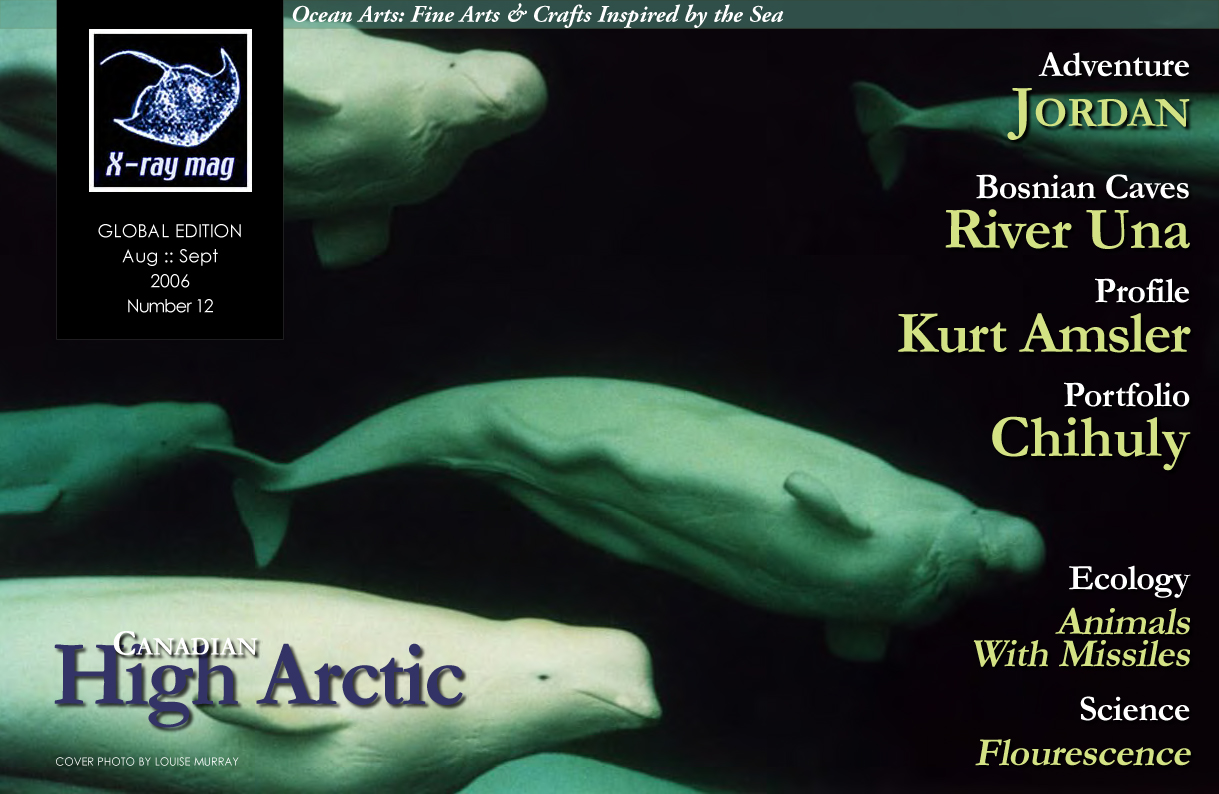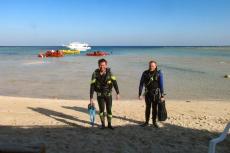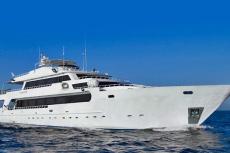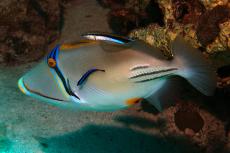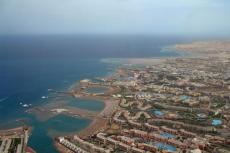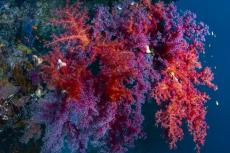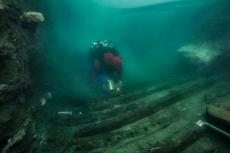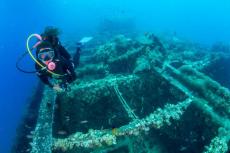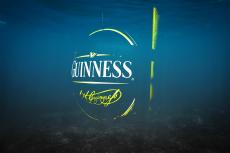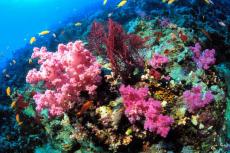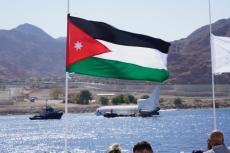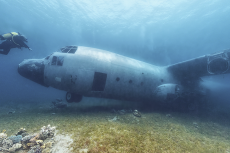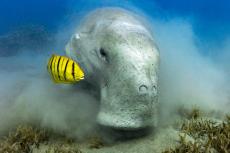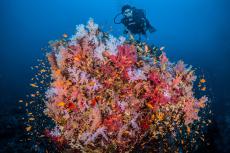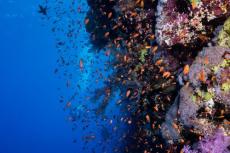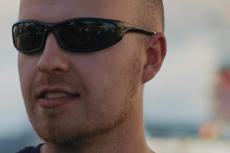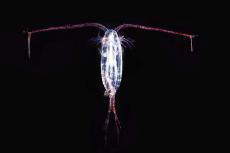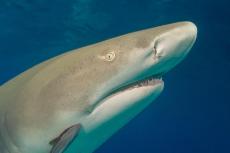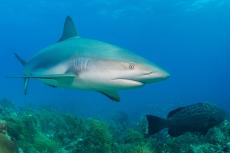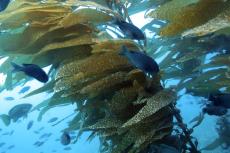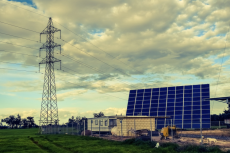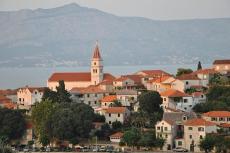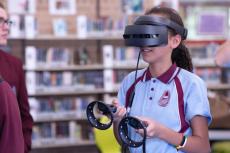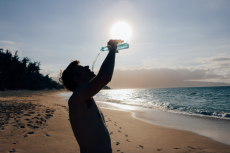
Jordan
The Hashemite Kingdom of Jordan is just soaked in this special ambience that dreams and adventures are made of—the air scented with traces of spices, desert flowers, charcoal and tobacco smoke from the water pipes and where the past and the present seamlessly weave together. It’s a mystic place that seems to exist in a time and dimension of its own. Relaxed, exciting and always intriguing, Jordan is a true getaway, yet also a place that plays with all six senses.
Contributed by
This first impression has stayed with us ever since. With great topside adventures and sights to balance easy and wonderful diving, Jordan is clearly one of the most under-appreciated dive destinations around.
Ancient land
Jordan’s history as modern state may be relatively short, but this land is ancient. It is also a biblical land revered by Muslims, Christians and Jews, and the country seems to be peppered with pitstops with some reference to the holy books, which always calls for a pensive moment even for the non-believer. It is said that half of humanity views this land and the river of Jordan as the geographic and spiritual heartland of their faith.
Here, the prophet Abraham arrived in the Holy Land; Moses saw the promised land, which he would never enter; John the Baptist preached, baptized Jesus and was killed by King Herod; Jesus received the Holy Spirit and resisted the temptations of Satan; and the Prophet Muhammad made his night time journey from Mecca to Jerusalem.
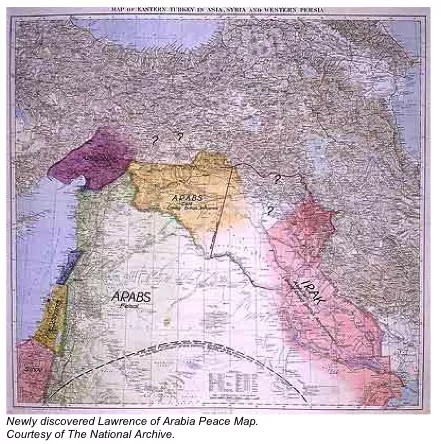
Here, you can experience the magnificence of Wadi Rum where the legendary Lawrence of Arabia during the first world war led the Arabs in a revolt against the Ottomans (Turks) and their 400 years of occupatio, and of course, Petra, the mystic rose city, which lay hidden for centuries deep in the forbidding mountain range between the Jordan river valley and the eastern desert expanses. Also we find here the Dead sea, the lowest point of the Earth and saltiest sea in the world with it’s eye-stinging 30% salt content. Here, the tales of a thousand and one nights co-exists with mobile phones and the Internet.
Much more than diving
Calling Jordan a dive destination might thus be somewhat a misnomer though we, obviously, also went there to dive. Surely, you can enjoy some good diving there, and the country makes no small marketing effort in making this statement too. But let me get back to the diving in a minute...
It is all the other stuff that truly sets Jordan apart and makes it not only worthwhile but also a must-see-at-least-once-in-a-lifetime destination. As for the diving, viewed out of the overall context, it is absolutely decent, though clearly not in the same class as the southern Red Sea, or the unique remote locations in Southeast Asia. But let’s not compare apples to oranges here.
With only 25 kms of coastline tucked away in the upper far corner of the Bay of Aqaba, the numbers of dive sites are somewhat limited by the competition for space from the port, ferry terminals and industrial complexes. Yet, it offers a couple of world famous dive sites and plenty of rich pickings to last you a very long diving holiday there.
Jordan’s stretch of coastline towards the Red sea is squeezed in between Israel and Saudi Arabia and faces the Sinai Peninsula and
Egypt across the Bay of Aqaba. At the apeks of the bay, the city of Aqaba lies adjacent to the Israeli resort town Eilat located just across the border. The borders in this area have, as one might expect, been drawn artificially, the concept of states and borders being mainly an European invention imposed on the region more than a century ago as a part of the struggle between the old colonial powers.
At first, Jordan did not have much of a coastline. The border between Jordan and Saudi Arabia was first formally defined in the Hadda Agreement of 1925. In 1965, Jordan and Saudi Arabia concluded a bilateral agreement that resulted in some exchange of territory and re-aligned the boundary extending Jordan’s coastline on the Gulf of Aqaba by about 18 kilometers. The new boundary enabled Jordan to expand its port facilities and establish a zone in which the two parties agreed to share petroleum revenues equally if oil was discovered.
This swap also brought a number of new dive sites within the Jordanian border. It is in this zone we now find most of the dive sites.
In return, Saudi Arabia got a large area of seemingly barren desert. Of course, shortly afterwards, the Saudis struck oil on their new piece of land!
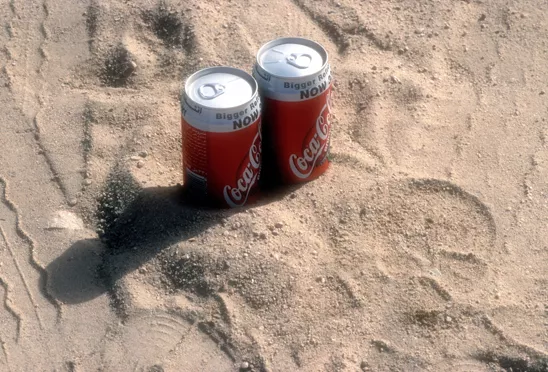
So, what’s on offer?
Surrounded by the rose-coloured mountains, whose hues appear to change as the sun moves across the clear blue sky, Aqaba is an ideal base for travellers who want to sit back and relax the easy life on a sandy beach, go diving or explore the many sites from a history that stretches back thousands of years.
Here, it is also possible to avoid the big crowds now seen at the more popular Egyptian Red Sea resorts and still enjoy extravagant and pristine coral formations and a spectacular wreck. Having previously been to Eilat, which is just a few kilometres away and from where I returned home quite disappointed as the diving appeared very barren to me, my expectations for diving in Jordan weren’t exactly sky-high when I arrived. But I was positively surprised, and I later learnt that more than 140 different species of coral have been identified here, many of which are endemic to the gulf.
The diving along this coastline is very good relative to other diving sites in the Northern Red Sea due to its sheltered location. The sea in the Gulf of Aqaba is almost invariably calm with temperatures varying between 20° C in winter months to 26° C in summer. All diving is shore based as Jordan offers fringing reef, which commences at the shore line, and there are no off-shore reefs to warrant boat diving. Both boat and shore diving access the same sites. It is just a matter of which mode of transport is preferred.
Ok, let’s start from the top—not very original, but at least it has some order to it.
The Power Station
The first dive site we find in the shadow of an old power station, about 5km south of downtown Aqaba. Here, the reef drops from the surface to 5m then slopes to 12m before dropping vertically to 200m in a sheer wall making it no place for divers lacking buoyancy control. There are overhangs at 25m where excellent fan corals and soft corals abound as nutrient rich waters gently flow along the wall also bringing cooler water up from the abyss. Here, even so close to the town and human infrastructure, big pelagics can be seen out in the deep blue. But it is mainly the structures and corals with fish and critters hiding in them that is the point of attraction here.
There are lots of glass fish here darting in and out of crevices in which various species of morays also like to tuck into. So do lionfish, which enjoy hanging upside down so they can look up too. Watch out for the various other members of the Scorpinidia family. If you look closely you may be able to spot several frogfish and the green-blue Devil Scorpion Fish—and perhaps an octopus. A safety stop at 5m will give you lots to see at the edge of the fringing reef.
The Zones
As indicated on the map of dive sites on the previous page, the lower part of Jordan’s coastline is mostly taken up by a coral reserve. This is subdivided into some zones. In the northern end, a part of the reserve is a no-go area for boats and divers. This is the part where the coral reefs are left entirely in peace.
A big section in the middle and two smaller ones at each end are set aside for diving, interspersed by two smaller areas. They are nothing much other than wide channels really, which are set aside for ‘multiple purposes’, which I guess means that boats are allowed to get to and from the shore. In any case, most of the dive sites, except for the “Power Station” and the “Saudi Border” are located in these reserved zones.
First Bay Area
The first section of the Coral Reserve is, unsurprisingly, called First Bay. It lies about 10km south of Aqaba town, and the reserve starts just past the Aquarium and Marine Center.
There are three primary dive sites in this section: “First Bay”, “Cazar Reef” and “Eel Garden”. Here, we are told we will find a shallow fringing reef with very prolific coral and fish life with the reef starting at 2m and extending down to 30-40m and beyond.
The entry point for First Bay is just about 200 meters north of the Club Murjan. We rig up on the beach, then start wading out into the lagoon and continue finning on snorkel once the water got up to our waist. Just before getting to the reef, we go on scuba and drop down and through a gulley at around 3m.
The area is a “mixed pasture” of coral patches and eel grass. At a first glance, it’s not really impressive—nothing dramatic seems to be going on here—but it’s got it’s own ambience and, as always, the devil is in the details—or rather, the small critters hide in the eel grass or small coral outcrops.
Since my friend John came out of the water being all bubbly and excited about all the seahorses he photographed, I was not able to help myself dive in and adopt a surely strangelooking swimming style where I, in a slightly downward tilted position, sweep across the eel grass patches with my face very close to the seabed. I can swim like this by being slightly buoyant while finning forwards and slightly downward. I must have looked like a dog sniffing out a patch of grass but it enabled me to pick out small decorator crabs and small shrimps camouflaged so well that I would not by any chance have spotted them otherwise.
Alas, I didn’t see the seahorses I really wanted to. Perhaps John had just been pulling my leg—wouldn’t be the first time. He likes teasing me.
Anyway, my sweeping across the seabed soon saw me out to about 12-15m where the coral outcrops and patches of sand were completely replaced by the eel grass.
Out here, it was said, I should’ve been able to spot Lunar Tail Grouper and large slipper lobsters. I have never seen one, so I was keen to spot one. But I seemed to have been out of luck on this day. So, I returned topside with a pleasant dive behind me but with little of interest on film. Can’t win them all I guess. Yet, when the sun settled that day behind the Sinai mountains across the bay, it had been a very giving and relaxing day. As I packed up my gear in the last sunrays my stomach started to rumble. Time for a quick shower and some fabulous shish kebabs under the starry night sky. One thing I can’t help liking about Arabia is the scented smell of their charcoal grills.
I didn’t visit “Cazar Reef” or “Eel garden”, also the location of “Club Murjan”, but at the first, there was a small area of upwelling, which attracts shoaling fish. Sea bass, lots of Cornet fish, shoals of Fusiliers, schools of Squid and Octopus are common making this an excellent site for photographers with several cleaning stations around. This is considered a more advanced dive site.
At “Eel Garden”, there is a pinnacle at 19m covered in soft corals and Christmas Tree worms of al colours surrounded by a dense growth of Black corals. The conspicuously looking Harlequin shrimp and Ghost Pipe Fish can also be spotted here regularly.
Abdullah Reef
Abdullah reef is off an area known as the Tourist Camp and known for stunning displays of fire coral. Again there is a slope between 5 and 12m leading from beds of eel grass down to a level of coral boulders and pinnacles. In the middle of the area there is a large circular reef with a Gorgonia Fan coral in the centre.
Following the reef south, there will be a large anemone city habituated, as usual, by clownfish and occasionally a Ghost Pipe fish hanging around too. Scorpion Fish will often try to disguise themselves on cabbage or acropore corals.
Adjacent to the Tourist Camp area, on the northern side of Wreck Bay, we find a dive site called the “Black Rock”, which is charactised by slopes of coral expanses and large bushes of black coral. Turtles are known to be frequent visitors to this reef and the easy access to this site and prolific life makes it ideal for snorkellers or less experienced divers. The corals start already just below the surface in the shallows before dropping away steeply about 30m from shore.
The Cedar Pride
This great wreck is arguably the most famous dive site in Jordan. The Cedar Pride was an 80m long Lebanese freighter sunk in 1986 by the late King Hussein at the wishes of Prince Abdullah, now King Abdullah, as an attraction for divers, both of them being avid divers themselves.
Cedar Pride was lying in ballast in Aqaba when a fierce fire broke out in the engine room. The fire raged for several days and two crew members perished. The accident left the 1,161 tonne freighter so heavily damaged that she was declared a total loss and abandoned in port for three years before it was decided to sink her as an artificial reef.
King Hussein, a keen diver himself, was patron of the project, so a location was promptly selected, the ship stripped down and cleared of dangerous chemicals, hazards to divers were removed and she was towed down the coast outside Aqaba and sunk.
She now lies only 150m from shore on her port side across two reefs at a depth of 12-27m in an undisturbed location where the visibility seldom reaches below 30 metres making this wreck one of the best shore dives to be found anywhere. Cedar Pride is mainly intact, even if the hull is starting to deteriorate, and home to many corals. It is often also possible to see sea horses at the wreck.
Above water, there is not much to be seen at the site. It is basically only a little sandy cove with a featureless beach along the coastal road between Aqaba and the Saudi border. Only the two big permanent buoys that mark the ends of the wreck gives away where it is, though you can just pick out a shadow in the water when the light is right.
There is a little jetty there enabling you to walk half the distance out to the wreck before having to take a giant stride off the platform. From here on, one just follows the slope down, if you can’t see the wreck already. In any case, one has to be grossly navigationally challenged to avoid this huge wreck, which lies across your path just in front of you.
Most of the time the full 80 metres of the wreck will be visible. As the wreck has come to rest on two reefs, there is an arch under the midsection of the hull with plenty of room to swim through and come out on the outer side of the wreck where the superstructure is.
Along the searails and, in particular, on the booms and crow’s nest, which is now jutting horizontally out in the water, there are some spectacular soft corals and gorgonians. It is easy just to fin around the perimeter at any depth and from below the silhouette of the superstructure and the crow’s nest against the deep blue beyond, there can be a striking view. As with wrecks everywhere else in the world this one is also home to many species of fish which like to take shelter in or around the wreck.
There were huge shoals of blue fusiliers constantly circling as well as Sergeant Majors and damselfish around us almost everywhere. We even spotted a couple of octopuses which folded and tucked themselves in the most incredible ways into the tiniest spaces. With no bones in their bodies they can contort themselves through any opening they can get their beak, their only hard part, through.
What really made this a most enjoyable dive site is the fact that it was a beach dive and you could just go up and down as many times as you pleased and had extra tanks available—your nitrogen load permitting of course.
As you can picnic right there on the beach too, it is perfect for a full day’s outing provided that you bring plenty to drink and a parasol or some other means of shelter.
The Japanese Garden
With the main reef starting already at 5 meters and with winding, sandy pathways leading the diver through gulleys alternating with eel grass beds the name of the reef is actually very fitting. Diving here is not unlike a stroll in a botanical garden where you want to leisurely look at all the displays of hard and soft corals and the myriads of colourful life darting in and out between the branches before heading round the next corner and into the next section.
Big cabbage and Brain corals can been seen here—bushes of black coral and some large gorgonians too. It’s a good site for macro. Typical fish here are the Guineahen Wrasse, Parrotfish, Blue Spotted Grouper, Trumpetfish and shoals of Orange Basselets and Sergeant Majors.
In the eel grass bed, you may find Snowflake Morays, resting turtles and if you swoop by closely enough scrutinizing the bottom, you may pick out a seahorse or two. Meanwhile, on the other end of the scale, if you lift your gaze towards the blue haze of open water in the distance, you may be able to pick out the outlines of patrolling white tip reefsharks.
Seven Sisters Pinnacles
This is a large, flat reef with seven pinnacles of coral, which makes for another dive that is easy, relaxed and full of stuff to watch. The area is full of marine life, and with a depth of only 8-9m, which also allows a practically endless bottom time, this site is excellent for photography.
Each pinnacle is covered in coral and absolutely teeming with life, which one can spend endless moments just watching until suddenly spotting something new that moves that apparently wasn’t a branch after all.
Big Eye Emperor and shoals of Fusiliers live around these pinnacles and circle them from above while porcupine fish hide underneath small outcroppings, peeking out warily at the passing divers with their droopy expressions.
M40 Tank
From the “Seven Sisters” you can reach the tank—yes, an armoured vehicle. But going directly out to this other quite unique dive site, you swim over some beds of eel grass in which there is a good chance of spotting seahorses before getting to an area made of mixed patches of sand, coral structures and eel grass.
Suddenly, at about the 6 metre level, you will spot an armoured vehicle very much out of its intended habitat. An old M40 anti-aircraft tracking vehicle, aka “The Tank”, was put in place here in September 1999 to create an artificial reef. With its twin gun barrels pointing out into the empty blue of the Gulf of Aqaba, it still seems poised to defend the coastline from an imaginary attack from the sea.
With its hatches open, and engine clearly visible, the tank was completely intact. As dive sites go, the novelty this on e quickly wears out—one visit is really cool, but suffices as the tank is a relatively small object. But the first encounter is fun, indeed, and I can clearly remember how my initial reaction went: “This is neat. Make reefs, not war.”
It is always fun to hover around an identifiable object, as if you could fly, and observe it from strange angles. As a photo subject, it is also something different from the run-of-the-mill house wreck, and you can make some good stills for your own photo album. As corals are just about to colonise the vehicle, please do try to avoid touching it however tempting it might seem.
While we were there, a pair of courting Trumpet Fish seemed oblivious to us as they carried on with their romantic liaison.
Gorgonia 1 and 2
Yes, this is actually two dive sites about 500 meters apart. The sites are named after a truly massive Gorgonia fan coral at 16m at “Gorgonia 1”. Nonetheless, this site is mainly relatively shallow and an easy dive mostly located at the 10 meter level where it comes up with a splendid display of massive coral formations, including a ‘lettuce coral’ the size of a minibus just as you exit the gulley taking you through the fringe of the reef. This site is also known for its three pinnacles teeming with fish life predominantly Lionfish and Anthias, but occasionally also Cornet fish and Jacks.
Throughout most of the year one of these pinnacles is covered in Lion fish which gather in huge numbers to hunt for fry, which makes for an extraordinary photo opportunity. There is also a resident turtle.
Another of the pinnacles is full of Glass fish, Coral Groupers and Stone fish and a big contingent of cleaner shrimps keeps a well-visited cleaning station busy at all times.
Approximately 500m to the south, “Gorgonia 2” bids welcome to divers with an easy entry onto a shallow grassy area, where the reef starts about 30 metres from the shore at 2m - 3m depth. The base of the reef is a good location to spot Scorpion Fish, Stone Fish and Crocodile Fish. We also find two large pinnacles at six meters and a reef with Broccoli and Rose coral, which drops down to 20m, and a large Gorgonia Fan coral. Lots of Lion Fish and eels.
Blue Coral
This site is characterised by fingers of corals extending from the coast like lava flows reaching for the depth. The flat stones at the entrance can be slippery, and with sea urchins present, caution is needed on entry. The reef starts at around 12m and is fringed with beautiful blue acropora coral and some rare sea anemones. This site is also known to have many unusual nudibranchs, so do kit up with your macro configuration here. Pipefish often hide in the sea grass too.
Saudi Border Drop-Off
The name of this site is to be taken quite literally. As we got of the bus taking us to the site, we were looking right at the gates to the Saudi Arabian border a couple of hundred metres further down the road. I guess that you could re-emerge on the other side if you wanted. The very little there is to see here top-side belies what is to seen underwater. This dive site, which was my favourite offers something for all levels of experience. There is an easy sheltered part dotted with interesting pinnacles and a plateau that gradually slopes into a wall of vivid coral that drops down to 50m and beyond.
Here, large Plate corals abound and small caverns at 30m. At around 40m, large Groupers can be seen peeking out from behind the rock pinnacles. Here the abyss really beckons you down and I soon enough found me too close to 40m for comfort being on a single tank and a rental regulator with a disturbing tendency to free flow. Needless to say I asked my buddy to stay close while I took some pictures of the massive formations of Cabbage and Broccolli corals here before turning back. On the way up we passed a spectacular double pinnacle on the edge of the wall at 18m where we came across a pair of playful turtles.
Petra
The Rose City
The ruins of Petra, the ancient capital of the Nabatea empire is one those marvels that captivates even the most seasoned traveller. Hidden and forgotten for centuries in a hollow among the rose sandstone and limestone hills, lies one of the most extraordinary and fascinating monumental complexes of the ancient world.
Walking down a gulley from the hotels in the nearby village of Wadi Mousa, nothing gives away that in the middle of this seemingly barren and hostile area, a splendid metropolis of an ancient culture is located. Yet, it was this invisibility and the natural defenses that guaranteed the safety and prosperity of the rose red city.
As we walk down the stony old path along the river bed and through a very narrow gorge, there stands (you don’t see it before it is there smack right in your face) the famous al Khazneh temple. Ornate, carved right out of the rose rock, it is an astonishing sight, the majestic structure rising all the way up along the cliff.
Here, centuries of history stares right back at you. The Petra valley has been inhabited since 1500 BC—and there’s no wonder why it has.
Looking at a map over the Middle East, Petra sits right where the roads running north-south and east-west met linking Gaza at the Mediterranean and Cairo in the West with Charax in the Persian Gulf and Medina in Arabia in the East with connecting routes coming down from Palmyra, Damascus and Amman towards Aqaba and the Red Sea. The complex is so much bigger than I thought.
Past the al Khazneh, it’s a whole city, which we spend the whole day exploring. Here, are temples, old arenas, houses, workshops... It’s impossible to do it justice in a just few pages.
We rounded off the day striding the one-hour climb to the magnifient Deir temple where we could also enjoy a breathtaking view over the whole forbidding range, with the Jordan valley in the West.
“Here’s a perfect moment in a perfect world”
The Dead Sea
You’re in “History Land”, a place where almost every human has a link, a bond, a root. Welcome to Jordan. A few miles away is Mount Nebo surrounded by olive trees. From this point, you can stare at the Dead Sea and the Promised Land... In this place, you can feel history in the ground, in the stones, in the air...
On the seaside, in the Mövenpick resort, 6000 square meters of luxury and softness are dedicated to body and skin care: Zara Spa is the place. You can enjoy several water pools with different salinities, from neutral to the Dead Sea flotation pool. Discrete perfumes and fountains keep you in a very “zen” frame of mind.
More and more people are coming here just to heal their skin problems such as psoriasis. And tour operators are targeting this potential market more and more. It’s turning Jordan into a family destination where the Mister can cure his skin, and the Madame can visit historical places such as the Baptism Site of Christ, Madaba mosaic’s factory and Jerash’s antique city. And as Jordan is mostly safe, she can drive by herself in a rented car, as all road signs and directions are written both in Arabic and English.
With the very broad array of treatments offered at the spa, you can just get lost with the choices: hot stone massages, algae wraps, Dead Sea mud body treatments and facials, Dead Sea salt peels, hydrotherapy, aromatherapy... Well, if you want to test everything, it will probably take two weeks and quite a lot of money—but it’s worth it, for sure. Even If you’re not a Spa-aholic, you must test a few of them!
As the sun goes down on the Israeli side of the Dead Sea, the spa turns silent and welcomed fresh fragrances waft out of the magnificent gardens. Then, you can join some friends at the Chicha Bar to enjoy genuine mint tea, or taste the apple-flavored narghileh. As Mövenpick concentrates many activities in the hotel, you can spend your whole week there. It is a guaranteed soft moment for the whole family. ■
The Dead Sea is both the lowest point on Earth at 418 meters below sea level and falling, and the deepest hypersaline lake in the world at 330 meters deep. It is also one of the saltiest bodies of water on Earth with a salinity of about 300 ppt, This is about 8.6 times greater than the average ocean salinity. It is 67 kilometers long and up to 18 kilometers wide, and is located on the border between the West Bank, Israel, and Jordan, and lies in the Jordan Rift Valley. The main tributary is the Jordan River.
Lawrence of Arabia
Lieutenant-Colonel Thomas Edward Lawrence, CB, DSO, Legion of Honour (1888 –1935) gained international fame for his role as a British liaison officer during the Arab Revolt of 1916-18.
Lawrence first journeyed to the Middle East in 1910 where he studied Arabic in preparation for joining a British Museum excavation in Syria. In 1914, under the guise of a field trip, he participated in a British military survey and mapping project on the Turkish-controlled Sinai Peninsula. When Turkey entered the war on Germany’s side, British Military Intelligence sent him to Cairo.
Meanwhile, the Arabs viewed the involvement of the Ottoman Empire in the war as an opportunity to revolt and drive the Turks from their land. Seeing in this a chance to harass the Turks, the British lent support to the Arabs through shipments of arms and money. The revolt sputtered, however, and was by 1916 in danger of collapsing. Lawrence was sent to bring order and direction to the Arab cause.
The experience transformed the introverted Lawrence into one of the most colorful military figures of the war. For two years, Lawrence and his band of Arab irregulars attacked Turkish strongholds, severed communications, destroyed railways and blew up hundreds of railways bridges.
They ambushed and conquer ed Aqaba from the Turks and supported the British regular army in the drive north to Damascus. His leadership brought success and he entered Damascus with the Arab tribesmen to prepare the way for King Faisal. He then attended the Peace Conference at Versailles with the Arab delegation.
Published in
-
X-Ray Mag #12
- Læs mere om X-Ray Mag #12
- Log ind for at skrive kommentarer
